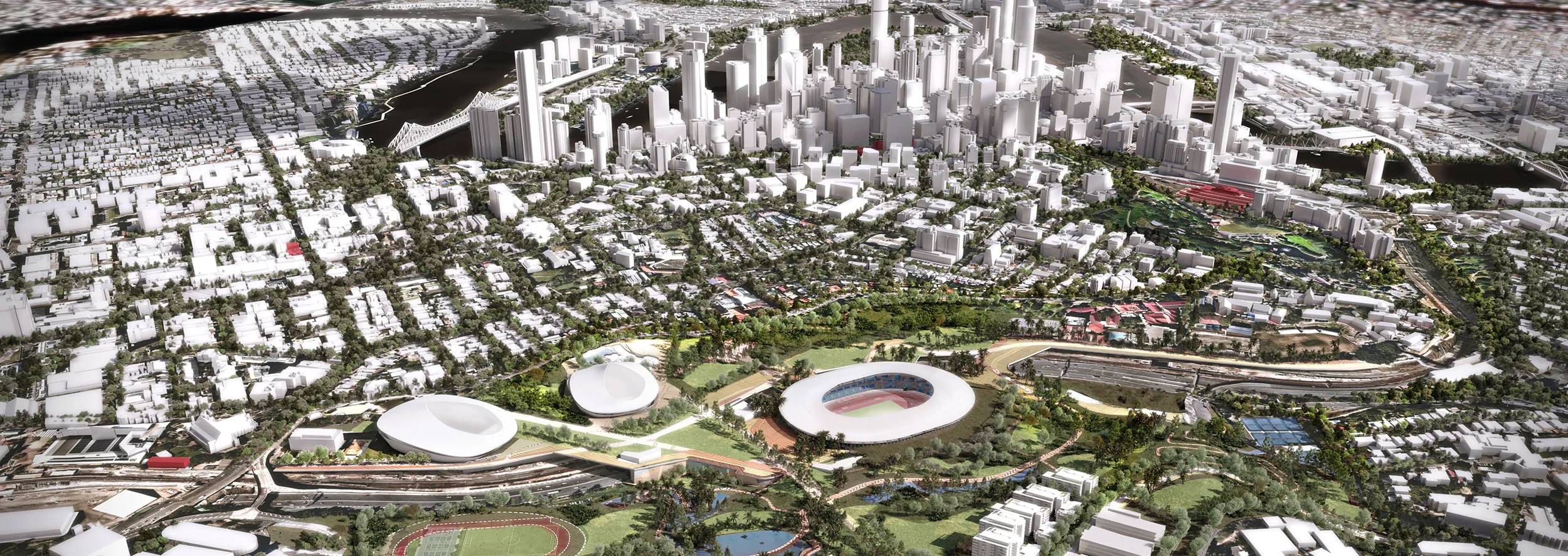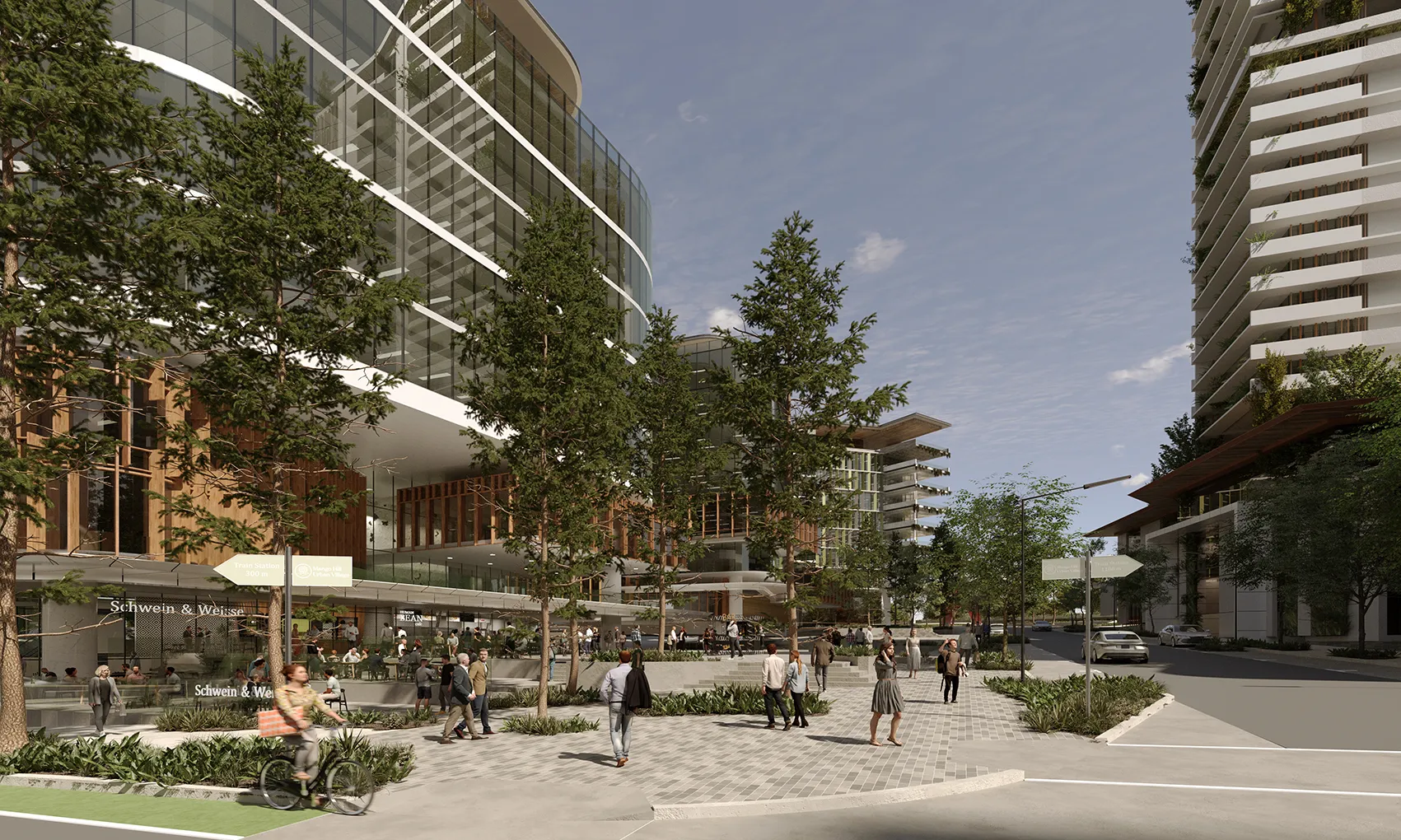
With July 2023 dubbed the world’s hottest month on record, the ‘burning’ realities of a warming planet are very much upon us. As landscape architects, urban designers, and architects, we are not only acutely aware of the challenges of climate change - we design in response to them every day. Equally, we are well accustomed to the growing trend of green-washed renders, promising thriving green walls cosseting the entire western façade of a proposed development irrespective of the harsh and glaring realities of our fearsome Queensland sun. Sensibly, these green walls rarely materialise beyond the computer screen, perpetuating ‘green failure’ by neglecting to deliver what was promised. So as designers, how do we balance the pragmatic and poetic to authentically integrate verdant subtropical green within our urban realm?
Here’s a sneak peek into one of Archipelago’s recent projects, where we explored community engagement through natural shade planning, and employed strategic civil acupuncture to rebalance the streetscape in favour of narrowing the grey, and increasing the green.
Ashgrove West – from Grey to Green
Firstly, we were privileged with a great client - the Brisbane City Council (BCC)! They supported our vision to cast our green-hungry eyes towards the forbidden grey of the dreaded road reserve with a view toward carefully fine-tuning the streetscape parameters to unlock a wider footpath and increased amenity. With BCC’s full support, we moved beyond their initial brief for much needed amenity improvements to realise the true village potential of this inner-urban Brisbane precinct.
Secondly, we engaged with an outstanding consultant team who fully embraced our process, working with us to deliver a character-rich ‘Village Destination’ that stitched together the sunny and shady sides of an inner-urban neighbourhood street, long severed by a major roadway. Collectively, BCC, Archipelago, and the wider consultant and construction teams were united under a shared ambition to deliver great places for people. Together, we worked to inject vitality through an enhanced public transit experience, offer high-quality urban amenity and dramatically improve the quantum of shade from both natural and built sources.
Finally, we challenged the pervasiveness of overhead services and the ‘generosity’ of the road reserve, taking the opportunity to narrow lanes and reduce, consolidate, and relocate overhead power lines to reveal additional room for trees. By moving, lifting, and redirecting electrical lines, the design reclaims the street. By narrowing traffic lanes, designing out traffic islands, and consolidating high voltage overhead lines, we achieved wider, tree-lined pedestrian pathways, inviting multi-use plazas, and an integrated bus shelter.
The extensive tree planting offers welcome shade to a previously exposed, unprotected streetscape. 27 additional advanced trees offer an immediate 284sqm of shade beyond the existing 62sqm from two existing site trees. Coupled with the 64sqm of new bus shelter, the 2027 projected shade canopy uplift of 724sqm is an invaluable commodity in our warming neighbourhoods.
Underpinning the design, the pragmatics of an arterial roadway and retail environment required careful cross-disciplinary coordination to deliver wide ranging accessibility improvements. This was a key project driver for Archipelago's Landscape Architecture team. As the principal consultant leading a creative civil collaboration, the team unlocked full DDA accessibility and pedestrian expansion through detailed project level and drainage strategies, enabling full streetscape DDA accessibility and inclusivity. Because shade, shelter, and integrated urban environments should be available for everyone.
The role of landscape in our urban environments is evolving – gradually, but it’s gaining pace as we begin to fully appreciate the consequences of urban heat island effect. As an industry, we can, and should, do better. We are stewards of the future, and if we want a greener and cooler future (and we most definitely do), then it is up to all of us to be vocal and act local to effect global change. So, find places for trees, plant them now, and plant them often.
We don’t pretend that the Ashgrove West Village Revitalisation is a revolutionary project, but it’s a start, and it represents an adaptable blueprint for others to learn from and replicate. We like to think that Ashgrove West may be looked back upon as a moment in time where the provision of green won a small battle against the rampant grey. At Archipelago, we are passionate about injecting natural elements into the fabric of urban spaces to create environments that not only combat and moderate the challenges of a warming climate, but also provide a sanctuary for community connection.
If you take one thing from today’s read, take this - integration of shade and greenery should not be a decorative afterthought or an eleventh-hour addition in the rendering process; it should be the driving force behind a concerted effort to deliver resilient cities and greener communities.


